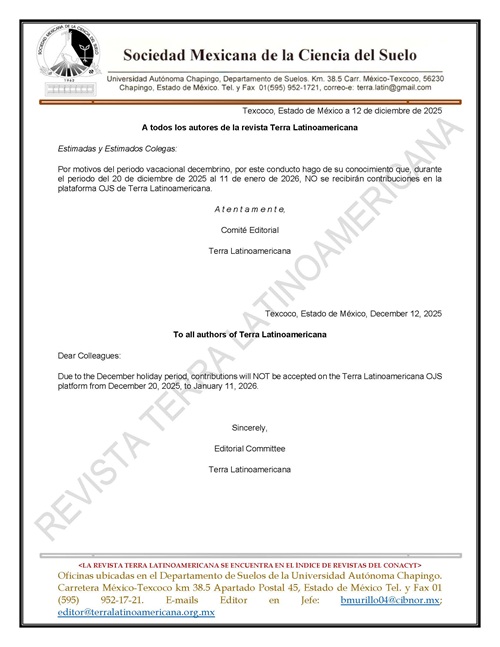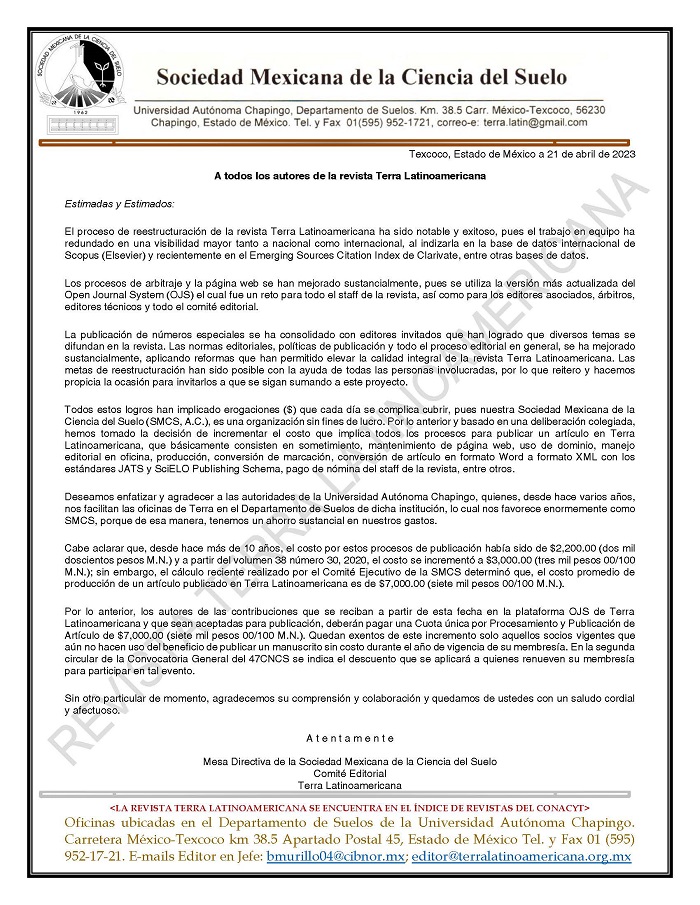The High Peatbogs of Tapantí National Park in Costa Rica: Characterization and Importance of the Peaty Soil
DOI:
https://doi.org/10.28940/terra.v41i0.1758Keywords:
carbon, high altitude wetlands, organic matter, SphagnumAbstract
In the highlands of Costa Rica, poorly studied ecological formations such as the paramo and peatbogs are present. Peatbogs in Costa Rica are located in the Tapantí-Macizo de la Muerte National Park in the Cordillera de Talamanca. The aim of our study was to characterize the soil of high peatbogs with the purpose of providing scientific information of these ecosystems as framework for future research. Vegetation description and soil samples were collected from four peatbogs (T1, T2, T3 and T4) at dif ferent depths (20, 30 and 60 cm) in an altitudinal gradient ranging from 2400 to 3100 m. Physical and chemical analyses of the soil were carried out in the laboratory of the CIA-UCR, and the vegetation of the peatbogs was described. The soils in the peatlands correspond to the histosol order with a sandy loam texture, which predominate in cold and swampy areas. The percentage of carbon and organic matter was high in T3, with 32.90 and 47.05%, respectively, while the C/N ratio was higher in T1, with a ratio of 22.3%. The sites with the highest similarity were T2 and T4 by 99%. The vegetation characterization was represented by vascular plants, bryophytes, especially of the genus Sphagnum, and lichens that contribute to the formation of the peaty soil. Peatlands are ef ficient in accumulating carbon in the soil due to the accumulated organic matter. The lack of previous studies prevented us from comparing the results obtained here. As this is an unprecedented study, our research is a valuable scientific contribution that can be used to consolidate the conservation of the small extension of high peatbogs in the country.
Downloads
Publication Facts
Reviewer profiles N/A
Author statements
- Academic society
- Terra Latinoamericana
- Publisher
- Mexican Society of Soil Science, C.A.

















